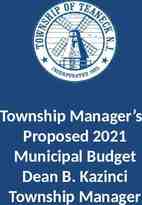UN 38.3 Lithium-ion Battery Testing Vibration and Shock
27 Slides497.50 KB
UN 38.3 Lithium-ion Battery Testing Vibration and Shock Testing Requirements
UN 38.3 Lithium-ion Battery Testing Topics Key points of presentation UN 38.3 test overview UN 38.3 vibration and shock test details Mild and full hybrid electrical vehicle battery systems Vibration and shock issues Vibration test analysis and recommended change Shock test analysis and recommended change Summary Back-up – – – – Transportation scenarios Calculations Vibration Isolation Aviation shock specification 2
UN 38.3 Lithium-ion Battery Testing Requirements KEY POINTS Lithium-ion batteries designed for hybrid electric vehicles (HEV) are large and complicated structures. Lithium-ion HEV batteries are proven to be durable and safe for vehicle usage by extensive testing. Applying the existing vibration and shock requirements to lithium-ion batteries designed for use in HEVs will increase the cost of HEVs and delay the adoption of HEVs in the market. Existing vibration and shock requirements are not valid for heavier lithium-ion HEV batteries. The existing requirements can be modified for large batteries and still assure safe transportation. 3
UN T1-T8 Tests UN 38.3 Manual Of Tests T1 – Altitude Simulation T2 – Thermal Shock T3 – Vibration T4 – Physical Shock T5 – External Short Circuit T6 – Impact T7 – Overcharge T8 – Forced Discharge Tests were designed primarily for cell phone and laptop cells and batteries. Tests simulate shipping environment and conditions, not the usage environment All tests must be passed Tests are without packaging 4
UN 38.3 Manual Of Tests T3 Vibration Testing Requirements 16 batteries – 8 Fully charged » 4 fresh and 4 with 50 cycles usage – 8 Discharged » 4 fresh and 4 with 50 cycles usage 3 hrs in each of 3 mutually perpendicular mounting positions Logarithmic sweep from 7Hz to 200Hz to 7Hz in 15 minutes – 7Hz to 18Hz at 1gn; amplitude decreasing – 18Hz to 50Hz with 0.8mm amplitude; acceleration increasing to 8g n – 50Hz to 200Hz at 8gn; amplitude decreasing – 200Hz to 50Hz at 8gn; amplitude increasing – 50Hz to 18Hz with 0.8mm amplitude: acceleration decreasing to 1g n – 18Hz to 7Hz at 1gn; amplitude increasing 5
UN 38.3 Manual Of Tests Current T4 Shock Testing Requirements 16 batteries – 8 Fully charged » 4 fresh and 4 with 50 cycles usage – 8 Discharged » 4 fresh and 4 with 50 cycles usage 18 shocks: 3 in negative and positive direction of 3 mutually perpendicular mounting positions Shock parameters – Normal batteries: Half-sine, 150 gn peak acceleration, 0.006 seconds pulse duration – Large batteries: Half-sine, 50 gn peak acceleration, 0.011 seconds pulse duration – Note: Large batteries have more than 500 grams ELC 6
UN 38.3 Manual Of Tests Pass Criteria for Both Tests No mass loss No leakage or venting No disassembly No rupture No fire OCV after test 90% of OCV before test 7
HEV Lithium-Ion Batteries Mild and Full Hybrid Applications Mild Hybrid Applications – One electric motor – Vehicle Functions » Assist during launch and acceleration » Stop/start engine when vehicle stops » Regen braking – 120 volts (32-36 cells) – Less than 500Wh – 14 kg battery assembly 400 x 250 x 150 mm 16 x 10 x 6 inches 8
HEV Lithium-Ion Batteries Mild and Full Hybrid Applications Full Hybrid Applications – Multiple electric motors – Vehicle Function » Allows electric only propulsion » Stop/start engine when vehicle stops » Regen braking – 300-320 volts (approx. 80-88 cells) – Less than 2000Wh – 45-50 kg battery 1000 x 350 x 300mm 40 x 14 x 12 inches 9
HEV Lithium-Ion Batteries Typical Usage, Vibration and Shock OEM Vehicle Requirements Useful Life: 15 years/ 150,000 miles Vibration Test Requirements – – – – Random vibration 1.28 grms 10 to 2000 Hz 24 hours/axis Shock Test Requirements – Mild HEV Battery Assembly » 132 shocks/axis at 25g’s, half-sine, 15 ms » 6 shocks/axis at 100g’s, 11 ms – Mild and Full HEV Package » 10 shocks/axis at 50g’s, 6 ms 10
HEV Lithium-ion Battery Transportation Prototype or Development Stage – – – – – Air and vehicle modes utilized but mostly vehicle Domestic and international Multiple shipments possible for the same battery (some in the vehicle) Batteries have not passed UN 38.3 testing Competent Authority will be used to allow shipping Production – – – – – Vessel and vehicle modes normally Domestic and international 5 or less shipments of battery before vehicle installation Starts in 2010 Must pass UN 38.3 tests or obtain special approval 11
UN 38.3 Vibration and Shock Testing Issues and Impact Per Delphi Analysis and Experience: – Current battery pack designs for mild and full hybrid applications are expected to fail the T4 vibration test – They may also fail the T3 shock test Redesigning to pass UN vibration and shock tests would add development time, mass and cost to HEV battery systems : – That have already met requirements for 15 years of vehicle usage – That will be shipped only a limited number of times and rarely be air Impact – HEVs will be more costly to the consumer and possibly delayed – Adoption of HEVs will be delayed along with their ecological and energy benefits 12
UN 38.3 Vibration and Shock Testing Test Analysis Mild hybrid lithium-ion battery packs are about 14kg gross. – Maximum T3 vibration force will be 27,000N. – T4 shock will be 41,000N. Full hybrid lithium-ion packs are about 48kg gross. It is not a large battery by current definitions. – Maximum T3 vibration force will be 94,000N. – T4 shock will be 141,000N. 13
Vibration Test Analysis HEV battery systems are assemblies of electronic controllers, sensors, air flow ducts, cabling, cell mounting fixtures, cells, trays, covers and attachment brackets. – They are not “solid” like cells and laptop batteries. – They will have several resonant frequencies under 200 Hz. – Estimated force exerted on mild HEV batteries due to damping and resonance is approximately 27,000N. – Full HEV battery force is approximately 94,000N. With the understanding that vibration test parameters are based on air transportation of small lithium cells and batteries, these parameters do not realistically apply to larger batteries. 14
Vibration Test Analysis UN T3 testing of HEV batteries at these frequencies and 8gn is unreasonable because: – Vibration of the transportation mode is reduced due to the mass of the pack. – Test requires vibration to be “faithfully” transmitted to device, yet vibration would not directly pass from the transportation mode to the battery due to the isolation provided by the skid or container and the package. – Force levels can not be transmitted by the transportation mode » Force required to vibrate a large notebook computer battery (0.5 kg) is 1000N. » 27,000N and 94,000N are very substantial forces 2750kg wrecking ball falling Or stopping a 550kg wrecking ball after falling 1 second (35kph/22mph) in 1 meter 9500kg wrecking ball falling Or stopping a 550kg wrecking ball after falling 1 second in 0.28 meters 15
Vibration Test Analysis and Recommendation T3 Test Recommendation For batteries 12kg: – Reduce force level from 8gn to 2gn Basis for recommendation – Force levels are more realistic and exceed current exerted forces. » Force required to vibrate cell and notebook batteries at 8gn 1000N » 1000N applied to vibrate a mild hybrid battery is 0.33g. – 2gn is equivalent to 5880N for a 12kg pack – 9 hours of swept-sine vibration testing at 2gn is still a severe test for a large battery. 16
Shock Test Analysis and Recommendation T4 shock forces on mild HEV batteries would exceed 40,000N. – Full HEV battery forces would be 140,000N. Again, with the understanding that these shock values are based on air transportation of small lithium cells and batteries, these parameters do not realistically apply to larger batteries. UN T4 testing of HEV battery packs at these forces is unreasonable because: – These force levels could not be transmitted by the transportation mode » Force required to shock cell phone and notebook batteries at 150g n 1500N » 1500N applied to shock a mild HEV battery ( 500Wh, 12Kg) is 6.5g n. – There is no source for the additional 38,000N. – Aviation specifications (RTCA) test for Crash Shock at 20g maximum. Recommend limiting acceleration to 50gn for all batteries 12 kg – Far exceeds realistic and expected levels – 50gn already is used in UN 38.3 for large batteries. 17
Summary Mild and full HEVs will have lithium-ion batteries that will have to be tested according to UN 38.3 Manual of Tests UN 38.3 T3 vibration and T4 shock tests are unrealistic when applied to large batteries If these tests remain as currently written, conversion of the world vehicle fleet to hybrids will be delayed Proposed T3 modification is to reduce g level from 8 to 2 for batteries 12kg or heavier Proposed T4 modification is to reduce g level from 150 to 50 for batteries 12kg or heavier 18
Back-up Material Follows 19
Back-up HEV Lithium-ion Battery Transportation Scenarios Prototype or Development Stage 1. 2. 3. 4. 5. 6. 7. 8. Battery transported from manufacturer to airport by vehicle Airport to airport Airport to distribution center by vehicle Distribution center to HEV system integrator by vehicle HEV system from system integrator to OEM engineering by vehicle HEV (car) from OEM engineering to test site by vehicle HEV (car) back from test site to OEM engineering by vehicle HEV system from OEM engineering back to integrator by vehicle Production Stage 1. 2. 3. 4. 5. Battery transported from manufacturer to marine port by vehicle Marine port to marine port Marine port to distribution center by vehicle Distribution center to HEV system integrator by vehicle HEV system from system integrator to OEM assembly plant by vehicle 20
Back-up Calculations Resonant Vibration Force at 8gn – Force [mass] x [acceleration]/[ξ, the damping constant] – Damping constant is set at .04, empirical value based on testing similar designs – Mild Hybrid Force 14x8x9.8/(.04) N or 27,000N. – Full Hybrid Force 48x8x9.8/(.04) N or 94,000N. Shock Force at 150gn – – – – Force [mass] x [acceleration] x Dynamic Amplification Factor Dynamic Amplification Factor is set at 2 Mild Hybrid Force 14x150x9.8x2N or 41,000N. Full Hybrid Force 48x150x9.8x2N or 141,000N. 21
Back-up Vibration Isolation Mass of Pack Mass of Pack K Stiffness of battery K Stiffness of battery Kp Stiffness of packaging In testing, vibration is transmitted to the battery depending on the stiffness of the battery. Kc Stiffness of container Ktest Kbattery In reality, vibration is transmitted depending upon the stiffness of the container, the packaging and the battery. Kequivalent 1 1 1 1 Kbattery Kpackaging Kcontainer 22
Back-up Calculations Stopping a wrecking ball examples: – – – – – – 550kg wrecking ball after falling 1sec in 1 meter Forceavg x distance mass x velocity2/2 Forceavg (mass x velocity2 ) / (2 x distance) Forceavg 550kg x (9.8m/s)2 / (2 x 1m) Forceavg 26411 kgm/s2 Forceavg 26411N – – – – – – 550kg wrecking ball after falling 1sec in 0.28 meters Forceavg x distance mass x velocity2/2 Forceavg (mass x velocity2 ) / (2 x distance) Forceavg 550kg x (9.8m/s)2 / (2 x 0.28m) Forceavg 94325 kgm/s2 Forceavg 94325N 23
Back-up Calculations Vibration force required for a large notebook computer – Force [mass] x [acceleration]/[ξ, the damping constant] – Damping constant is set at .04 – Force .5 x 8 x 9.8/(0.04) 1000N. Acceleration resulting from 1000N vibration force on a 12kg battery – – – – Force [mass] x [acceleration]/[ξ, the damping constant] Acceleration Force x [ξ, the damping constant]/[mass] Acceleration 1000N x [.04]/12kg Acceleration 3.33m/sec2 or .33gn 2gn force applied to a 12kg pack – Force [mass] x [acceleration]/[ξ, the damping constant] – Force 12 x 2 x 9.8/(.04) – Force 5880N 24
Back-up Calculations Force required to shock 0.5kg notebook batteries at 150gn – Force [mass] x [acceleration] x Dynamic Amplification Factor – Force 0.5 x 150 x 9.8 x 2N – Force 1500N Acceleration resulting from 1500N shock force on a 12kg battery – – – – Force [mass] x [acceleration] x Dynamic Amplification Factor Acceleration Force / [mass] / Dynamic Amplification Factor Acceleration 1500N / 12kg / 2 Acceleration 62.5m/sec2 or 6.5gn 25
Back-up Aviation Equipment Shock Requirements “RTCA, Inc. is a private, not-for-profit corporation that develops consensus-based recommendations regarding communications, navigation, surveillance, and air traffic management (CNS/ATM) system issues. RTCA functions as a Federal Advisory Committee. Its recommendations are used by the Federal Aviation Administration (FAA) as the basis for policy, program, and regulatory decisions and by the private sector as the basis for development, investment and other business decisions.” Source: rtca.org 26
Back-up RTCA Specification DO-160D: Environmental Conditions and Test Procedures for Airborne Equipment Shock – – – – – “Saw Tooth” configuration pulses 11ms pulse for standard testing or 20ms for low frequency testing 18 shocks, 3 per orientation 6g Equipment operating Crash Safety – Same as above except 1 shock/orientation at 20g 27
































